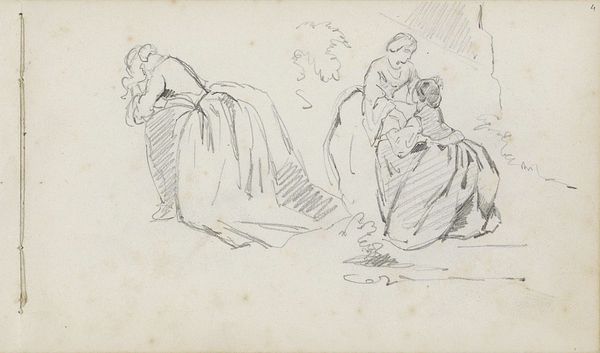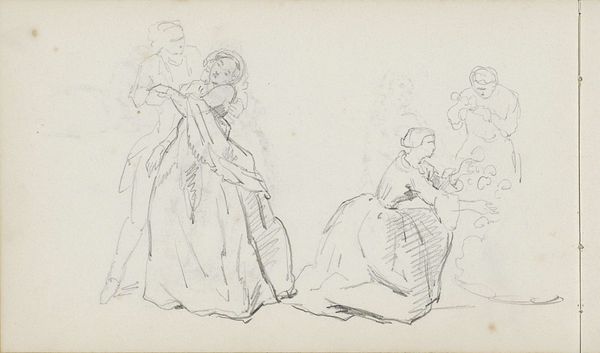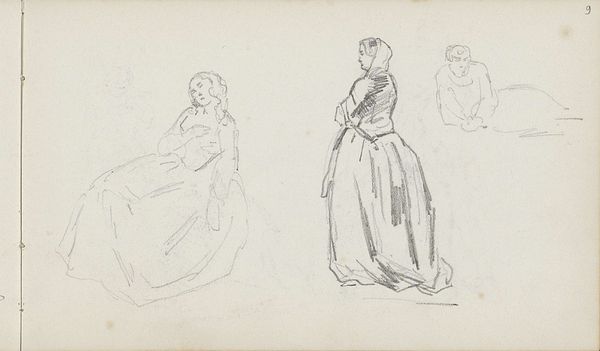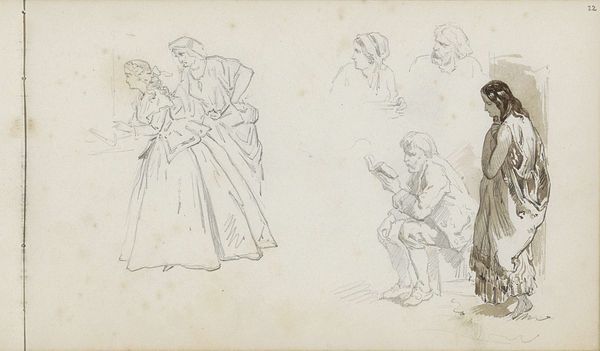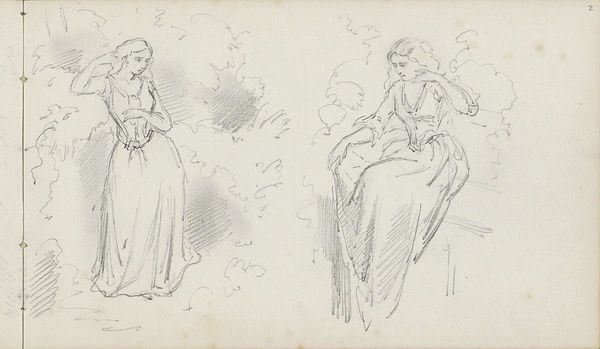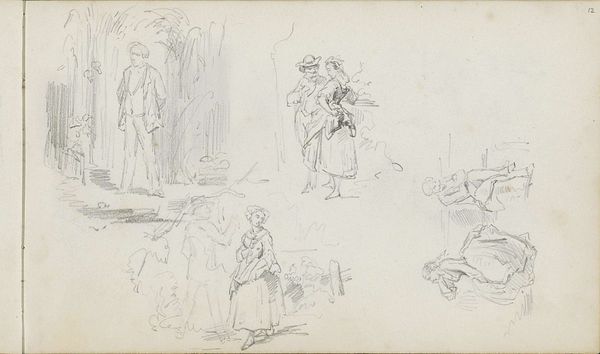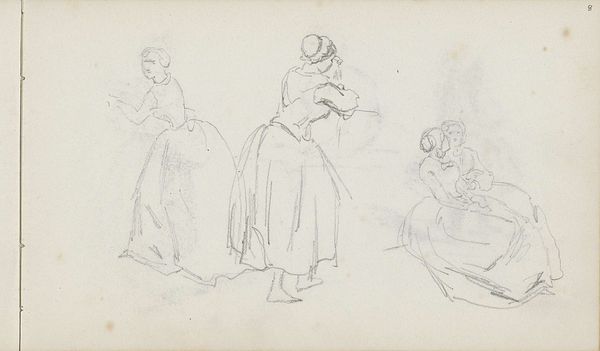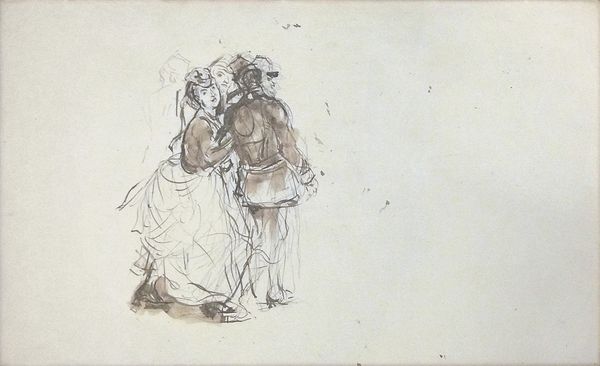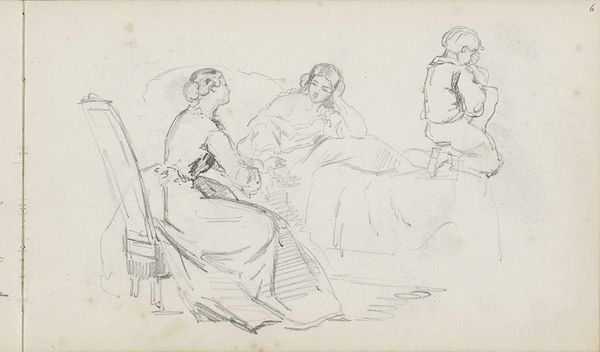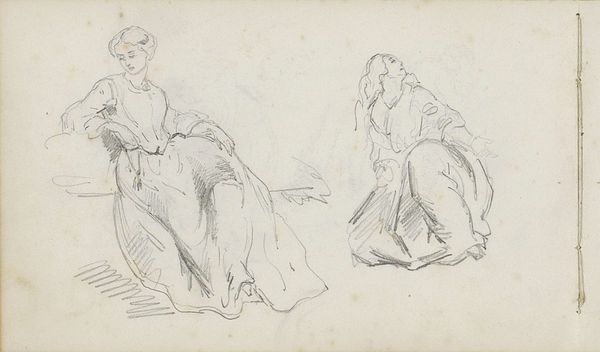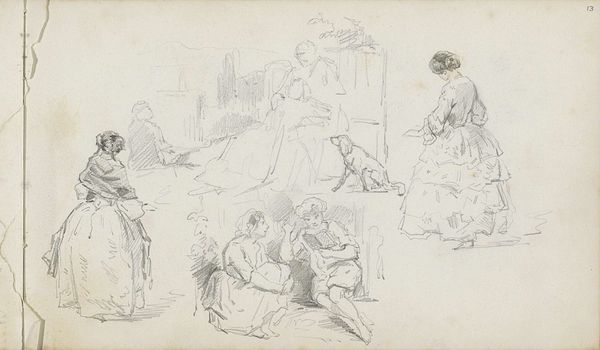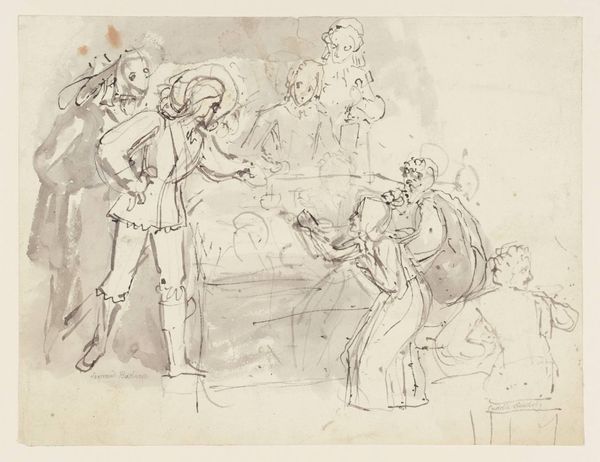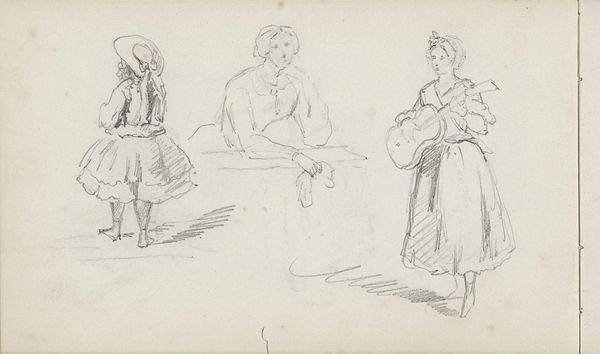
drawing, paper, pencil
#
portrait
#
drawing
#
figuration
#
paper
#
romanticism
#
pencil
#
genre-painting
Copyright: Rijks Museum: Open Domain
Editor: This is "Studieblad met figuren," a sheet of figure studies by Charles Rochussen, made with pencil on paper sometime between 1840 and 1860. It's currently housed in the Rijksmuseum. There's almost a theatrical quality to these sketched figures; they feel like actors on a stage, caught between acts. What do you make of this sheet of drawings? Curator: I see a clear depiction of labor—not in the sense of physical exertion, but of artistic production. The paper itself, likely machine-made by this period, provided a readily available, relatively inexpensive surface for Rochussen to practice and refine his skills. Notice the different techniques he employs – hatching, cross-hatching, stumping – showcasing a range of mark-making abilities. The material tells a story about art-making in the mid-19th century: the move towards readily available art supplies shifts the focus to skill and subject matter, a democratisation of the image production itself. Editor: That’s fascinating. I hadn't really thought about the paper as more than just a support. Does the way the figures are presented suggest something about their social class, their roles in society perhaps? Curator: Indeed. Consider the clothing – the clearly defined garments indicate class distinctions. The act of drawing these figures – recording the nuances of their dress – is a process of social cataloging. The finished sketches, if sold or disseminated, become commodities themselves, objects of consumption within the burgeoning art market of the time. This then shifts traditional art values. High or low depends on a customer's demands or tastes, blurring the line between those traditionally separated genres. It focuses on materiality and production! Editor: So the choice of materials, the drawing techniques, and even the subject matter are all tied to broader economic and social trends of the time. It gives me a new way to look at drawings. Curator: Exactly. Examining the means of production unveils the inherent social relations embedded in even a seemingly simple sketch. It pushes us to reconsider the "value" we place on art and challenges ideas of aesthetic beauty by shifting to value production as a whole. Editor: I hadn't quite considered it like that!
Comments
No comments
Be the first to comment and join the conversation on the ultimate creative platform.
